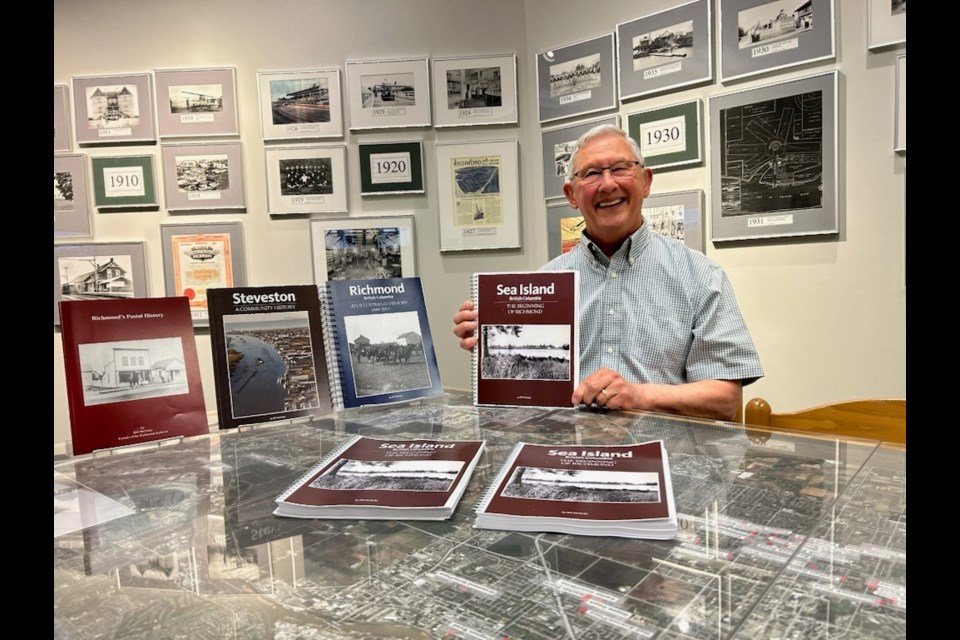A Richmond city councillor has published a new book about Sea Island, offering readers a detailed look into one of Richmond’s earliest and most vibrant communities. Once home to farming families, canneries, and boatbuilders, Sea Island is now better known as the location of Canada’s second-largest airport. But thanks to years of research and writing, Coun. Bill McNulty’s new work brings the island’s forgotten history back into focus.
Titled Sea Island British Columbia: The Beginning of Richmond, the book explores how Sea Island was once a thriving area full of farms, businesses, and community life. It includes personal stories and historic moments, from ice-skating adventures on the river in 1909 to early farming practices and the work of Japanese boat builders.
The councillor started the book after a request from the Sea Island Heritage Society. Two and a half years ago, the group wanted its local history recorded in book form. McNulty, who had already written three other historical books, agreed to take on the task and chose to self-publish this one as well.
The result is a 400-illustration book filled with maps, photographs, and archives from both the City of Richmond and the heritage society. McNulty says the book provides important insight into how Sea Island helped shape Richmond’s beginnings.
In fact, Sea Island was where Richmond got its official start. In 1879, a group of 25 farmers signed a petition to form the new municipality. Three of the first five city councillors and the reeve were from Sea Island. Early city decisions, including setting up taxes and governance, were made on the island.
During the early 20th century, Sea Island was considered a prosperous place. Alongside six busy canneries, it had the largest retail store in British Columbia at the time, the Grauer Store. Japanese fishing families also made up a significant part of the community, working in industries like canning and boatbuilding.
In 1921, residents of Sea Island even tried to secede from Richmond to form their own municipality. While their request was turned down, they gathered signatures and sent a petition to the provincial government. A bill was introduced to create the “Corporation of the District of Sea Island” but never passed. The idea was eventually dropped.
Education was another part of Sea Island’s rich past. The Sea Island Japanese School, started in 1920, was built and equipped by local Japanese families. While the teachers were paid by the school board, the community played a major role in creating the learning space.
Sea Island’s fate changed with the arrival of aviation. Although early planes flew from areas like Brighouse and Lansdowne Parks, Sea Island was chosen as the ideal location for an airport. Vancouver bought land, and soon the federal government took control of much of the farmland.
In 1941, Boeing built a plant on Sea Island. To house workers and veterans returning from war, new neighborhoods like Burkeville and Cora Brown were developed. The island also became a military training area during World War II.
By the late 1970s, the community began to fade. The last families in Cora Brown were moved in 1977 to make space for airport expansion. Today, only a few signs of the old Sea Island remain—Burkeville’s homes, some old pilings from canneries, and Sea Island School.
McNulty hopes the book will help new residents understand the city’s roots. With people moving to Richmond from across the world, he believes it’s important to preserve local stories.
“If we don’t know where we came from, we won’t know where we’re going,” said McNulty. “The past can teach us, and it helps us appreciate what we have now.”
This is McNulty’s fourth book. His past work includes titles focused on local schools and athletics. Through this new publication, he continues his effort to keep Richmond’s early stories alive.

